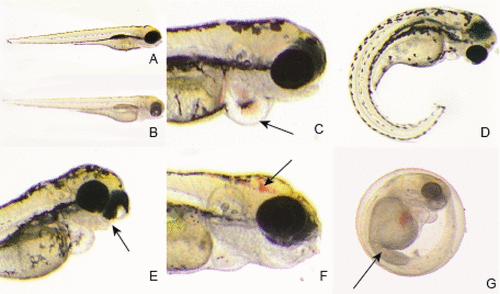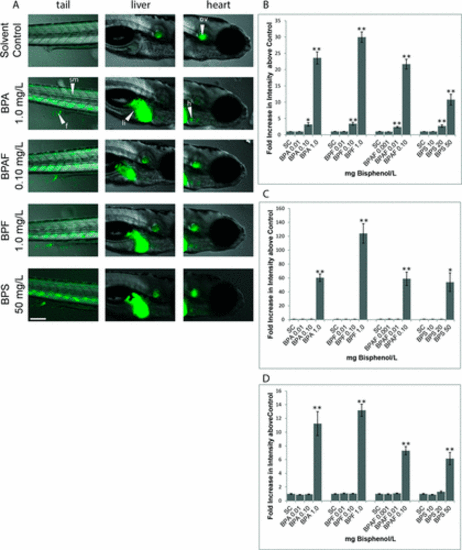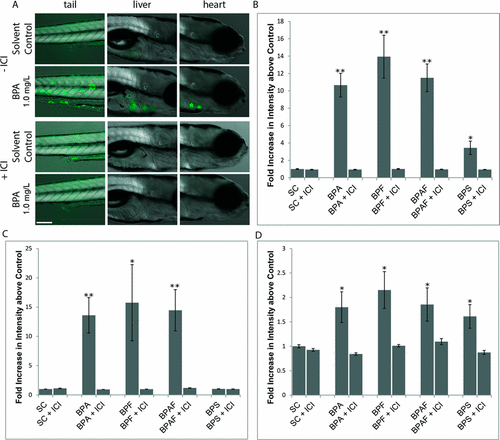- Title
-
Acute toxicity, teratogenic and estrogenic effects of Bisphenol A and its alternative replacements Bisphenol S, Bisphenol F and Bisphenol AF in zebrafish embryo-larvae
- Authors
- Moreman, J., Lee, O., Trznadel, M., David, A., Kudoh, T., Tyler, C.R.
- Source
- Full text @ Env. Sci. Tech.
|
Examples of typical teratogenic responses of zebrafish larvae observed upon exposure to bisphenol chemicals: (A) normal, (B) pigment reduction, (C) cardiac edema, (D) spinal malformation, (E) craniofacial abnormality, (F) cranial hemorrhage, and (G) yolk sac malformation. |
|
(A) Images of 120 hpf ERE-TG zebrafish larvae exposed to 1.0 mg/L BPA, 0.10 mg/L BPAF, 1.0 mg/L BPF, and 50 mg/L BPS (images for exposures to lower concentrations not shown). Fluorescence observed in otic vesicle (ov), heart (h), liver (li), somite muscle (sm), and fin (f). Scale bar represents 200 μm. (B–D) GFP induction (fluorescence) in 120 hpf ERE-TG zebrafish larvae exposed to bisphenol chemicals measured by fold increase above control in the (B) heart, (C) liver, and (D) tail somites. Data are reported as mean ± SEM (asterisk indicate significant difference compared with the control, *p < 0.05 and **p < 0.01). |
|
(A) Images of 120 hpf ERE-TG zebrafish larvae exposed to 1.0 mg/L BPA in the presence and absence of estrogen inhibitor ICI 182 780, scale bar represents 200 μM. (B–D) GFP induction (fluorescence) in 120 hpf ERE-TG zebrafish larvae exposed to bisphenol chemicals in combination with estrogen inhibitor ICI 182 780 measured as fold increase in GFP above control in the (B) heart, (C) liver, and (D) tail somites. Bisphenol concentrations were 1.0 mg/L for BPA and BPF, 0.10 mg/L for BPAF, and 20 mg/L for BPS, when included ICI 182 780 concentration was 607 μg/L. Data are reported as mean ± SEM (asterisk indicate significant difference compared with the control, *p < 0.05 and ** p < 0.01). |



